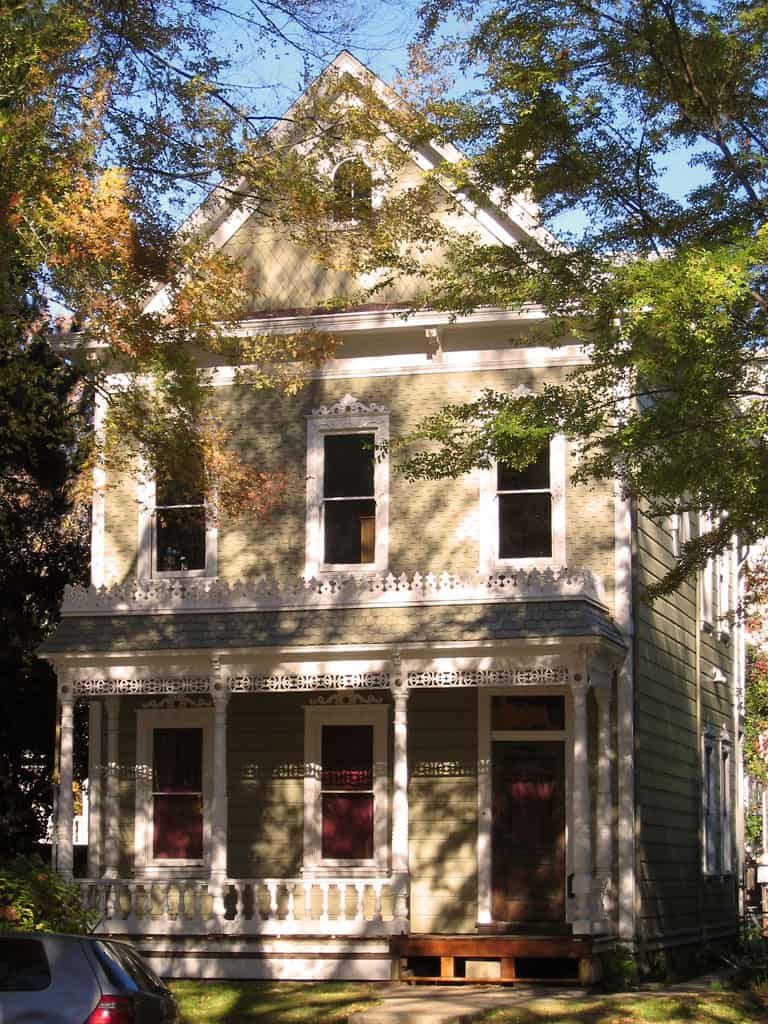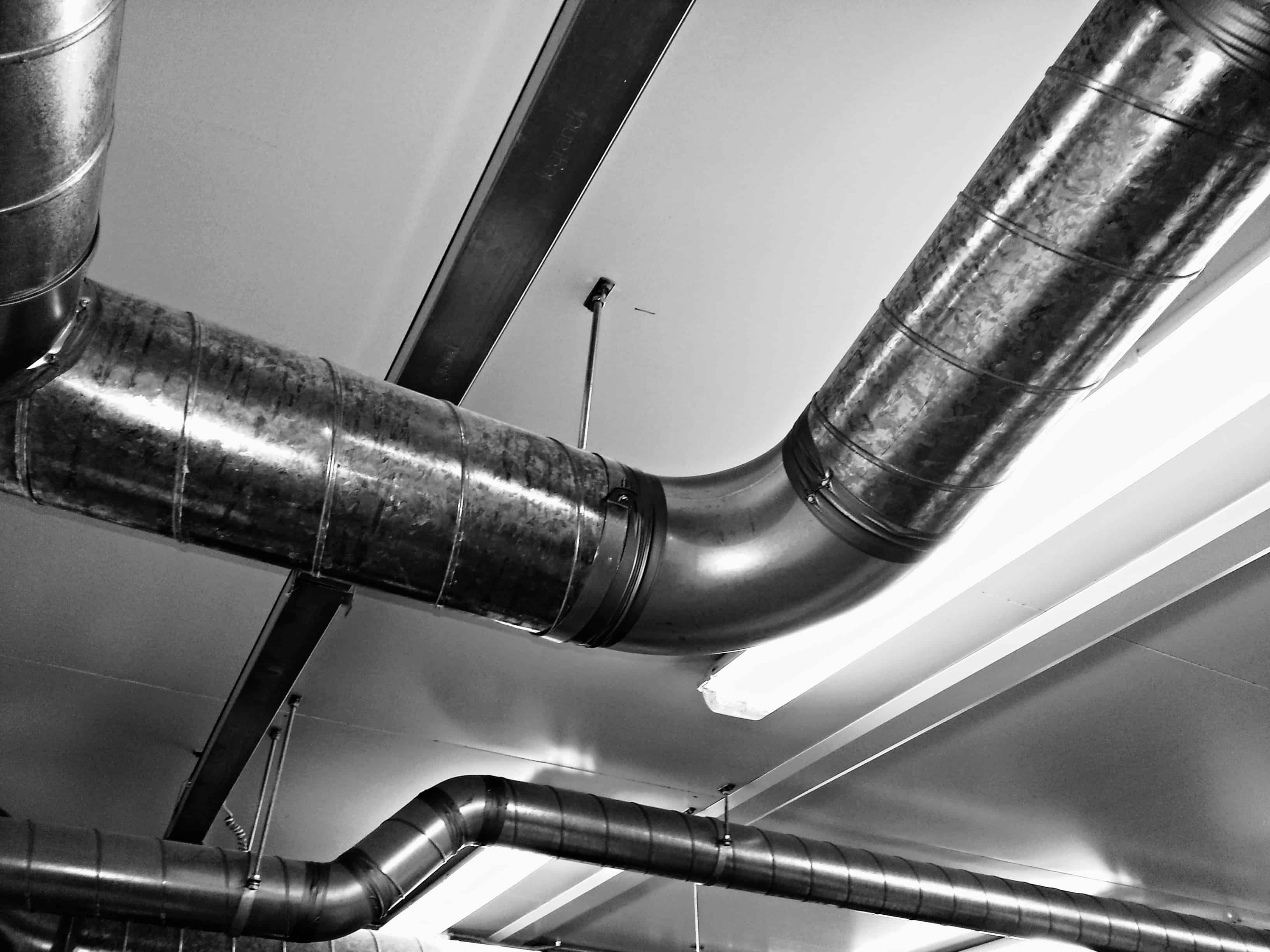Common and Costly: Leaky Ductwork in Midtown Row Houses
![]() There’s a lot of new construction in Sacramento lately, and I’m not just talking about the new downtown arena, Golden 1 Center. There are new houses galore, and I’ve noticed one style, in particular, has really come back into fashion—the three-story row house.
There’s a lot of new construction in Sacramento lately, and I’m not just talking about the new downtown arena, Golden 1 Center. There are new houses galore, and I’ve noticed one style, in particular, has really come back into fashion—the three-story row house.
Now, three-story row houses are no stranger to Sac—they’re all over Midtown. However, when it comes to HVAC systems, they do require some extra care. With three floors, furnaces in these houses rely more heavily on their ductwork to disperse hot air, and sealed ducts are essential when it comes to not only venting exhaust, but also keeping dust from hurting your home’s air quality. Older, historic row homes have a tendency towards leaky ductwork, and, since leaks can be pretty costly, I recommend homeowners learn to recognize the signs.
Signs to Alert You to Leaky Ducts
Did you notice that the causes of leaky ducts seem somewhat common, and the problems really, really annoying? That’s because they are, and that’s why it’s important to know the signs of the leaks. In fact, you may have noticed some of these signs already, you just didn’t realize they were being caused by leaky HVAC ducts.
Sign #1 – You’re uncomfortable: You’re sitting on the couch watching football and the room is so stuffy you can hardly breathe. Or the room is ice cold, even though you’ve been running your heater for hours.
Sign #2 – You’re broke: If your furnace is on the roof, and your living room on the first floor, you have to run the furnace five times as long to cool that space, which is inconvenient—until the heating bill comes and suddenly you’re broke. Then it’s a downright tragedy.
Sign #3 – You’re dressed oddly: You’re wearing a heavy winter coat indoors, along with a surgical mask. The coat is because your leaky ducts are restricting the furnace from getting warm air to the places in your house where it’s cold, and the surgical mask is to protect your mouth and nose from all the dust pouring through your duct leaks.
Causes of Leaky Ductwork in a Three-Story Home
There are many causes for leaky ductwork in a row house, especially one that’s been around a while, including:

A Midtown row house in Sacramento. | Photo courtesy flick’r user Greg Balzer.
- Moisture: Sacramento winters can be wet. Humid air can cause condensation when it comes into contact with cooler air, and condensation causes moisture. Condensation has an easier time getting into the air of a three-story row house because of all the extra doors and windows.
- Corrosion and stress: There are three-story row houses in Sacramento that are nearly 100 years old. Let’s see you try and make it to that age without being a little worn down or stressed. Normal use of an HVAC system will cause leaky ducts through stress or corrosion if not properly maintained—and replaced.
- Animals and bugs: They come in search of warmer air, and leave punctures in your ducts. Sacramento is the city of trees, which makes it easier for animals and bugs to climb onto the tall roofs of three-story homes and into the ductwork, causing minute, but costly damage.
- Poor installation: A particularly common cause of leaky ducts in older row houses that were built when HVAC technology was not nearly as advanced as it is today is improper installation.
The Effects of Leaky Ductwork on a Row House’s HVAC System
Whatever the cause, having leaky ducts equates to problems, including:
- Higher energy bills: To maintain maximum efficiency, your ducts must be sealed; otherwise, heated air escapes through leaks in the first floor, or wherever the furnace is located, and forces your HVAC system to work harder to get heat up to your third floor, a problem that one and two story houses don’t deal with it.
- Increased need for repairs: This problem connects to the first one. If your furnace has to run harder and longer to heat all three stories of your house, it’s going to age faster—and need to be repaired more often or replaced sooner.
- Poor air quality: Your air quality in winter, when you have your windows shut to keep out the cold, can greatly influence your health. Leaky ducts mean that dust from inside the HVAC system may be blowing unfiltered into your house, especially if you’re not getting your air filter replaced regularly (and, as you know, air filters are important). This dust can cause sinus problems, itchy eyes, and coughing. Three-story row homes are larger than most houses, too, which means there’s just more dust and more air that needs to be filtered in general.
Leaky Ductwork, a Natural Enemy of a Three-Story Row House
I touched on it a bit earlier, but here are some often overlooked reasons that leaky duct work is going to be problematic for you and the health of your home if you own an older three-story row house.

Air ducts working to heat a home. | Photo credit flick’r user will668.
- Leaky ducts make it harder for old houses to get warm air down to the first floor. Depending on when they were built, three-story row houses may have furnaces on the roof, since that was an easy way to dispose of excess air caused by the creation of heat before we had more modern HVAC technology. In order for heat from a furnace to travel the distance between the roof and the first floor, duct work needs to be sealed, and sealed well. Otherwise, too much air will leak out on the second and third floors, leaving the first floor colder—and the furnace working much harder than it should.
- Leaky ducts make backdrafting more likely. Backdrafting is when exhaust from the furnace is pulled back into a house, where the pollutants it carries can harm the people inside. Three-story row houses are generally built with flues to vent exhaust from the fuel-fired appliances inside of them. They’re also built with larger than average fuel-fired appliances because three stories is a lot of space to keep warm. That means even a small leak in ductwork designed to carry exhaust out of the house can result in a large amount of pollutants entering the air via backdrafting.
- Leaky ducts boost the air pressure in a house. The air pressure in a three-story row house is delicate. It needs to be even, so that the pressure does not aggressively push warm and clean air out through the many windows and doors on all three stories. For the air pressure to remain even, the HVAC system can’t be venting exhaust into the house, which happens when you have leaky ducts. Imagine you are throwing a party, and your goal is to keep your favorite 30 guests indoors because that’s the ideal number. This is a tough goal because your three-story house has so many places for guests to exit. Now, if someone lets uninvited guests into your house, your favorite guests are going to get uncomfortable and head for the exits. That’s what happens when you have leaky ducts. The air you want inside is pushed out by exhaust that comes in through leaks.
Now that you know the causes, hazards, and warning signs, please take a moment and ask yourself—do I have leaky ducts. And, more importantly, do I want to continue living with leaky ducts? I know I sure wouldn’t.
Fixing leaky ducts can be a tricky business, particularly in an aging three-story row house where you want to preserve as much of the history and core of the building as possible, but professional HVAC techs can find leaks and seal them up without having to rip your walls apart. Your home will be healthy, efficient, and maintain its historic charm.
Don’t let leaky ducts create cool temps and high bills this winter. Contact the professionals at Bell Brothers to have your leaks found—and fixed.

